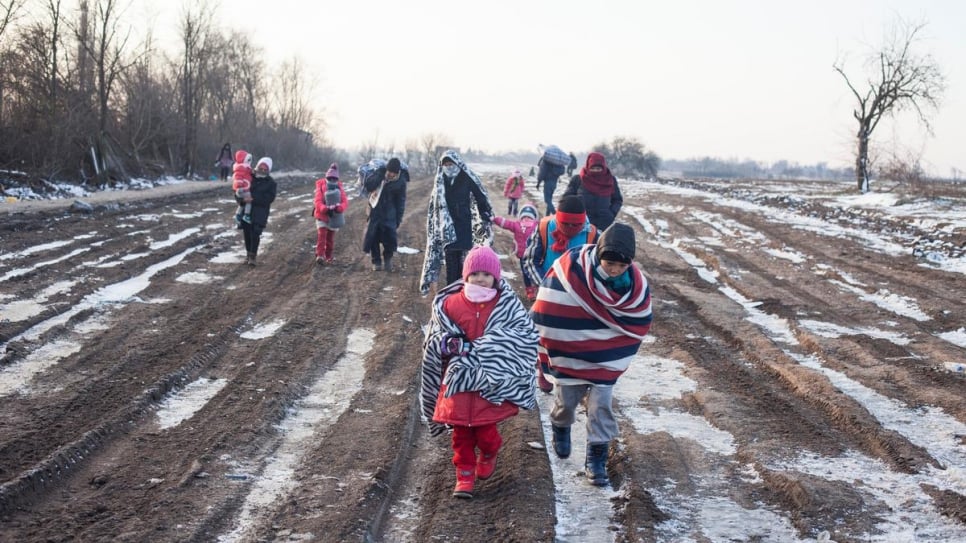According to a Fox Report on Monday, the migrant crisis has officially expanded to the Northern borders of the United States as people are coming through Canada to get into the United States, and it was anticipated.
AP reported in November on the migrant’s shift in focus to Canada from Mexico, writing, “a family is part of a surge in the number of Mexicans who have requested asylum in Canada this year. Due to the relative ease of obtaining asylum in Canada compared to the U.S., visa-free travel between Mexico and Canada, and the threat of violence back home, more than 8,000 Mexican nationals have sought refugee status in 2022. That’s almost five times as many as last year and more than twice as many as in 2019, the last year before the COVID-19 pandemic and the travel restrictions that accompanied it.”
The vast majority of them are flying into Montreal, which has many direct flights to and from Mexico.
In the first nine months of 2022, the Immigration and Refugee Board of Canada, an independent tribunal that investigates and decides asylum cases, finalized more than 2,700 claims by Mexican asylum seekers. Of those, 1,032 were accepted, 1,256 were rejected, and the remaining 400-plus were either abandoned, withdrawn, or had other outcomes, said Christian Tessier, an IRB spokesperson.
In Canada, claimants must meet the United Nations’ definition of a “convention refugee,” meaning they are outside of their home countries and have a well-founded fear that they would be persecuted if they returned based on their race, religion, political opinions, nationality or affiliation with a social group. Otherwise, they must prove they need protection and can’t safely return to their home countries without risking torture, cruel or unusual punishment, or death.
Despite the risk of rejection, though, the surge in Mexicans seeking refugee status in Canada persists.
The Welcome Collective, a Montreal-based charitable organization that provides essential goods to new asylum seekers, said half of the group’s current clients came from Mexico — a 300% increase compared with earlier this year.
“They had to run away because of violence and other humanitarian reasons. To find a better place for their children,” said Flavia Leiva, the group’s volunteer and social outreach coordinator.
As for what is causing the increase in applicants, Leiva suggested that social media plays a role.
“There have been YouTubers and some videos on TikTok talking about how easy it is to come to Canada,” she said.
At least one YouTube video published ten months ago and made for a Mexican audience explains the Canadiana process.
Fox News reported:
Fox News’ Casey Stegall reported Monday on “America’s Newsroom” that the northern U.S. border with Canada has seen close to 56,000 migrant encounters in the 2023 fiscal year, which began October 1.
As a result, border agents are being moved from the southern border to assist their colleagues at the Swanton, Vermont crossing. Stegall said officials are primarily seeing Mexican nationals crossing during a time that is typically slow because of extreme weather conditions.
For all of 2021, the northern border only had about 27,000 crossings, according to Stegall. He said the Swanton sector saw 367 apprehensions in January, higher than the previous 12 January months combined.

An internal email obtained by Stegall requested volunteers to go to the northern border area to “increase detection and custody operations, transportation and flight line security operations.”
To help with the influx, Border Patrol is recruiting volunteers to start as early as March 1st.
Former Yuma (Ariz.) Sector Border Patrol Chief Chris Clem said the northern border is often forgotten because the volume at the southern border is “astronomical.”
“This is why we need the resources, not just on the southern border, but our northern border and our coasts as well,” said Clem.
Clem said “electronic travel authorization allows [migrants], basically visa-free, to fly in from Mexico to Canada, which means now they have access to move about Canada freely. And then at that point, they’re coming in.”
Clem said the influx of migrants is something that requires a “policy response.”

“We have to stand strong. We ought to stand firm with our partners. We need the administration to reach out to Canada, just like we need them to reach out to Mexico and hold them accountable to make sure both borders are secure.”
According to CBP’s January update, Border Patrol agents at the northern and southern borders seized 264 lbs of fentanyl in January, up from 66 lbs in January last year and just 5lbs in December.
However, the amount seized when including OFO’s seizures at ports of entry is much higher.
Overall, 1,200 lbs of fentanyl were seized in January across all ports of entry, up from 796 lbs from January last year — but down from the massive 6,200 lbs seized in December. Overall this fiscal year so far 12,000 lbs have been seized by OFO (CBP’s Office of Field Operations (OFO)
Seizures at the ports themselves were highlighted this week when CBP officers in Nogales nabbed nearly 200,000 fentanyl pills and two pounds of powder under the seat of a vehicle.
Fox News’ Adam Shaw contributed to this report.
